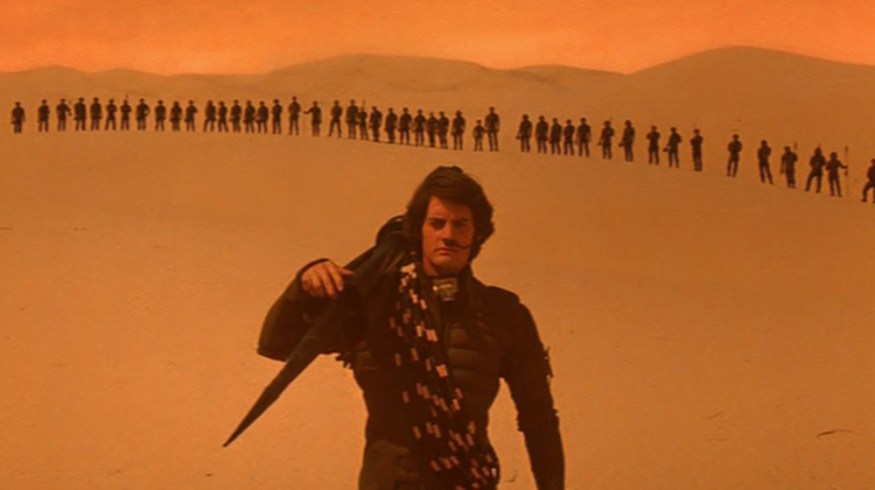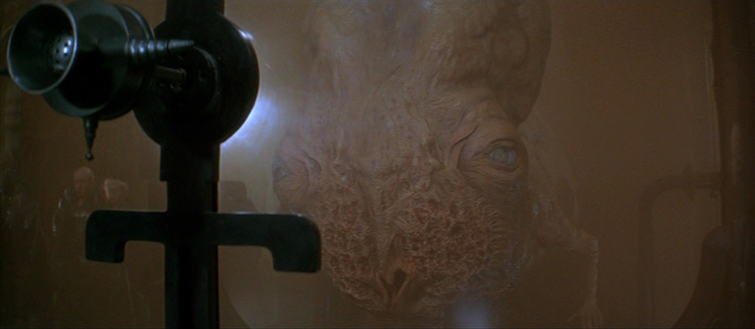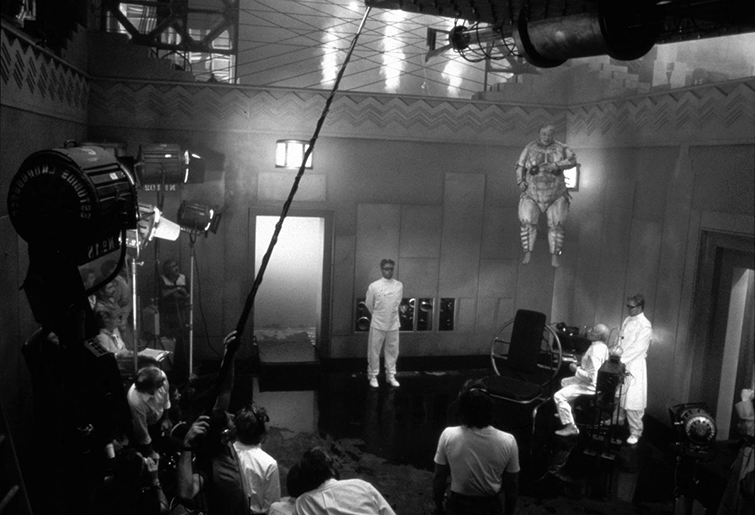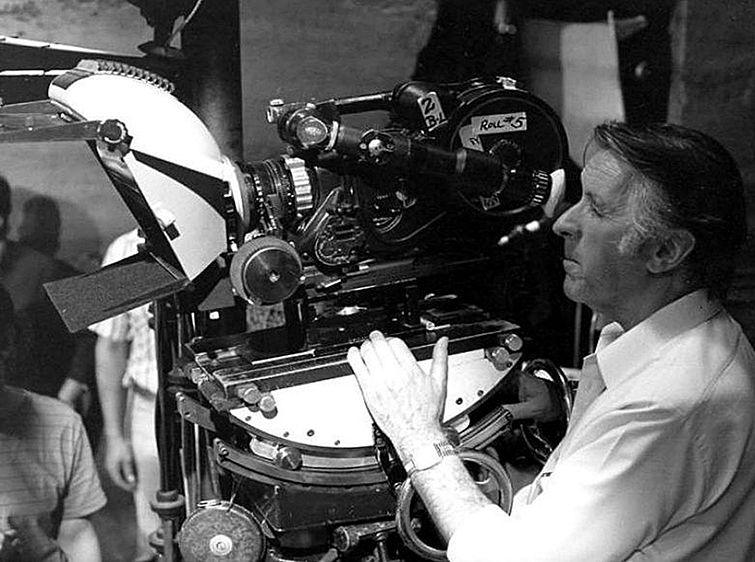
5 Reasons Why David Lynch’s Dune Kind of Rules
As we get ready for Denis Villeneuve’s next masterpiece, let’s take a look at a film that was arguably treated unfairly upon release.
Have you ever watched a movie and thought—okay, what the #%@$ is going on here?—but still enjoyed the experience? This is my relationship with David Lynch‘s 1984 adaptation of Frank Herbert‘s Dune.
Now, before I start waxing poetic about why it’s one of those rainy day comfort movies, let me first state on the record that, objectively, Dune is not a “great” film. It has many structural issues that can’t even be individually singled out because (as a whole) it’s just messy.
Yet, while a lot of it—some of the effects, a few of the performances, the overall editing—hasn’t aged particularly well, there are still, from a filmmaking standpoint, plenty of things to love about Lynch’s Dune.
Let us now take a closer look at this iconic oh-so-80s sci-fi classic and perhaps finally get to the bottom of exactly what in the %@$ is going on here.
1. Practical Effects Gone Wild

After years of adaptation roadblocks, production on Dune finally got underway in 1983. Like a lot of genre films of the early and mid-eighties, it featured an ambitious mix of on-set practical effects and post-production VFX.
It’s the practical effects that still impress. Case in point, as seen above—the guild navigators. Every time I look at one of these things, I have to ask, “Exactly how did they construct that?”
What I do not have to ask in this specific instance is, “What in the %@$ is going on here?” Because I know what’s going on here: David Lynch with a hey-make-us-a-Star-Wars budget is what’s going on here.
The villain of Dune, the devious Baron Harkonnen, is another notable practical effects achievement. The Baron wears a special suit that suspends him in mid-air. He must constantly levitate (due to a weird plot point from the book that I think is better in theory, and that I won’t get into here). Nonetheless, the crew had to practicality keep him afloat, drifting up and and down and across the set, on a wire for entire scenes. It was a challenging feat for sure, and, in my opinion, they made it work.
As seen in the video above, special effects assistant Gary Zink and the team rigged up a system of pulleys and harnesses to make the character fly (with an assist from some effective match cuts). Is it a little goofy looking sometimes? Probably. Is it perfectly weird mid-eighties sci-fi? Absolutely.
The effects were actually a point of contention throughout the shoot for cinematographer Freddie Francis, despite his good working relationship with Lynch.
Speaking of cinematography–
2. Stunning Cinematography

Look, I don’t care what your cinematic tastes are or even what you think of Dune as a movie. None of that stuff changes the fact that there are dozens and dozens of individual frames from this film that are truly breathtaking.
Freddie Francis (DP of classics like Glory, Cape Fear, and Lynch’s pre-Dune The Elephant Man) used anamorphic Todd AO 35 glass to capture the wide, grand scope of Herbert’s many worlds.
Francis also used a Lightflex. This allowed him to use less fill light while shooting at deep stops, enabling him to capture an extremely deep depth of field.
What’s a Lightflex? Good question. I looked it up so you don’t have to. Here’s how American Cinematographer defined the tool (built by Gerry Turpin in 1972):
Lightflex is an oversized filter-hood faced with optical glass. Dimmer-controlled quartz lamps built into the hood reflect into the lens and overlay a controlled amount of light on the scene to be photographed at the time of exposure. The device can be used to adjust the gamma curve of the emulsion, and also extends its photometric range without affecting grain.
– American Cinematographer

This helped Francis use super-contrasty, high-speed film stocks while stretching the exposure range of the negative. It’s a pretty sharp-looking movie for the time it was filmed. While it wasn’t nominated for any Oscars, it’s got that warm, grand look that I’ve come to love about old action movies.
3. The Shield Fight
Seriously, I don’t know what else to say about this if you haven’t seen the movie, other than—just watch the clip.
4. The Soundtrack
Here’s a fact some might call Lynchian: TOTO—you know, the band that covered Weezer’s “Africa”—did the Dune soundtrack. TOTO.
Look, Flash Gordon got Queen in 1980, and nobody else was enlisting TOTO to score their film, so kudos to Lynch for just going for it. And while I suppose there’s a chance this could have been a studio decision, as TOTO was popular at the time, it doesn’t matter. Either way, the soundtrack is unique and holds up. Listen to it and tell me I’m wrong. (FYI, I can be reached at totofan4ever@premiumbeat.net.)
Worth noting: One track—“Prophecy”—was actually produced and recorded by Brian Eno. You might find it reminiscent of the Vangelis score for Blade Runner. It’s also so good that I was forced to include this three-hour clip of it on repeat.
5. The Legacy of Dune
I think one of the most mind-blowing aspects of any attempt to turn the Dune saga into movies is that it’s mind-blowing that anyone would attempt to turn the Dune saga into movies. The actual plot of Dune (the book) is so complicated and interior, that it’s just (quite frankly) hard to visualize and put onto film.
So, even when you take someone like Lynch or Alejandro Jodorowski, you run into massive roadblocks creatively (or from the studio) because the material is just so dense. I mean, there’s an entire documentary dedicated to the topic of adapting Dune and how fascinating of a journey that idea is.
And now, another brave filmmaker is about to give it a go. Of course, I, as an intellectual (pushes glasses up), am still waiting for a studio to adapt the fourth book, God Emperor of Dune. Until then, this new one looks fine, I guess.
I’m joking, obviously. I’m also all in; you’ll find me front and center in full sand-worm cosplay on opening day. Because, if the trailer, advanced festival buzz, and Villenueve’s track record are any indications, longtime Dune fans may finally get the adaptation they’ve been waiting for. Spice gotta flow, y’all.
For more director profiles and general filmmaking advice, check out these articles:
- How Bo Burnham Shot His Netflix Special “Inside” with a Lumix S1H
- Lights, Camera, Action: How Filmmakers Frame Heroes and Villains
- Learn from the Masters: The Best Documentaries About Filmmaking
- The Cameras and Lenses Behind the Marvel Cinematic Universe—Phase Four
- To Break or Not to Break: The Significance of the 180-Degree Rule
Cover image via Universal Pictures.




